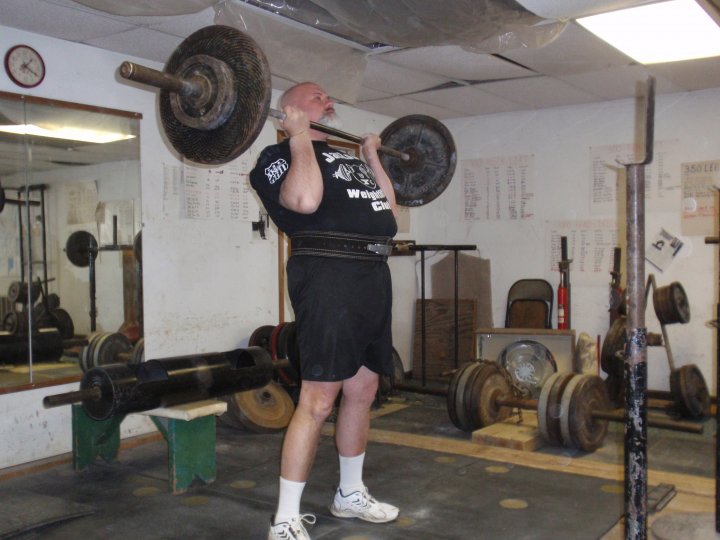The Cheat Curl: Part 1
by Thom Van Vleck
The first part of this article will deal with the Rules of the Cheat Curl and some technique advice. Later, I will do a “part 2” on how to use this exercise effectively for training. I am profiling this lift as it is part of the JWC Straight Weight Challenge.
The USAWA Rule book says:
D6. Curl – Cheat
The bar begins on the platform, and at the lifter’s discretion, is picked up with a grip that has the palms of the hands facing up or away from the lifter. Feet placement and hand spacing is optional, but must remain the same throughout the lift. Heels and toes must not rise during the lift. Once the lifter is upright in a standing position with the arms and legs straight, the bar on the thighs hanging at arms’ length, an official will give a command to curl. The knees must remain locked and the legs straight during the lift. The lifter is permitted to bend at the waist, sway the body, or drop the shoulders to gain momentum of the bar. The bar may be lowered prior to the beginning of the curl. The bar must be curled from arms’ length to touching the upper chest or neck in one motion. Any downward movement of the bar during the curl is a disqualification. Once the bar is motionless, and the lifter is upright, an official will give a command to lower the bar. The lift ends when the bar returns to the platform under control by the lifter.
I have seen this lift done in a couple of different ways. The first way, which is the way I prefer, is to lift the bar to the start of the curl position. I then bend forward at the waist KEEPING the bar at the SAME spot on my thighs and then drive my hips forward while lifting the shoulders and pulling back. An example can be seen on the video list on this website. I have always been a “hip” puller and this technique favors me. However, Al Myers does a different style that may better suit others. Al will bend at the waist and drop the bar BELOW THE KNEES and then attempt to pull straight up. He keeps the bar tight to the body, much like he was doing a reverse grip clean from the floor. Al told me that one of the reasons he favors this style is the fact that he’s torn both biceps and wants to minimize the stress on them as much as possible.
Experiment around with both styles and try to find which one suits you best. I have never been satisfied doing something the same way, I’m always trying to tinker with my technique for greater gains and lifts. Next time I’ll talk about using the Cheat Curl to help your overhand pulling.
